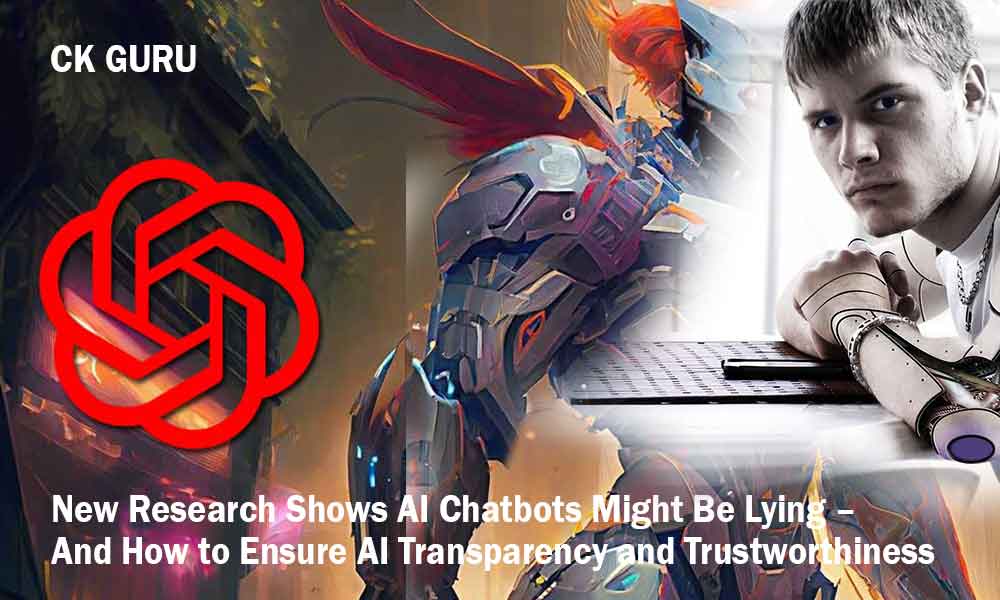Does AI Endanger Human Employment? Most Recent Professional Views
Artificial Intelligence (AI) has transitioned from the realm of science fiction to become a concrete phenomenon reshaping our work environments. With the growing impact of AI, discussions are becoming more heated: does artificial intelligence pose a danger to human employment, or does it provide chances for work to be reimagined? This detailed report examines expert perspectives, data, and emerging trends, with an emphasis on low-competition and long-tail keywords such as “impact of AI on employment,” “AI job displacement,” and “AI future job opportunities.”
Introduction: The Ascendancy of AI in Employment
One of the most significant factors influencing employment globally is the swift development of artificial intelligence. AI is now automating processes, analyzing data, and even generating creative content across various environments, from manufacturing floors to offices. This basic change brings up a crucial question: does AI pose a danger to human jobs, or does it merely alter the conditions of work?
In the last few years, authorities worldwide have expressed concern as well as hope. The reality is multifaceted—while AI disrupts conventional jobs, it also generates unexpected opportunities.
- AI and Job Displacement: Reality or Paranoia?
- Which professions are most endangered?
The most evident effect of AI is the automation of predictable and repetitive tasks. Jobs involving manual work, data entry, and even some professional white-collar positions are more likely to be replaced as AI outpaces humans in terms of speed, accuracy, and availability.
Illustrations of Jobs at Risk Manufacturing line operators Customer service representatives (chatbots and virtual assistants)
Fundamental administrative personnel (handling data, organizing timelines)
Certain positions in logistics and transportation (e.g., autonomous delivery vehicles)
Given AI’s potential to manage cognitive tasks like analyzing medical images, conducting legal research, or preparing financial reports, even white-collar jobs are not immune.
Effect on Work of a Routine Nature and at the Entry Level
As companies implement AI to reduce expenses and enhance efficiency, entry-level positions are increasingly threatened. Jobs that used to serve as entry points into various industries may now be automated, thereby reducing career access for newcomers. Young professionals and individuals lacking advanced digital skills may find it challenging if these jobs are lost.
Vulnerabilities Specific to the Industry
Different sectors are exposed to varying levels of risk. Research emphasizes the sectors that are most impacted by automation driven by AI:
Manufacturing: Millions of jobs worldwide are at risk from robotics and AI.
Retail and Hospitality: Automated kitchens, self-checkout systems, and inventory management solutions.
Banking and Finance: Algorithmic trading, detecting fraud, and customer service chatbots.
Transportation: Autonomous vehicles and tools for managing vehicle fleets.
AI and Job Creation: New Prospects Developing Job Categories
The emergence of AI involves more than just job losses. It also drives the need for new roles that have never existed before:
AI trainers and explainability specialists Algorithm auditors and ethicists Data scientists and ML engineers AI hardware experts Cybersecurity professionals with a focus on AI systems Roles Enhanced by AI
In numerous jobs, AI serves as a formidable productivity enhancer that supplements human talent instead of supplanting it. As an example:
- AI is used by doctors for more precise disease diagnosis.
- AI research tools are utilized by journalists for filtering extensive datasets.
- To create more effective campaigns, marketers use AI to analyze customer data.
- Teachers use adaptive learning software to tailor educational content.
- Areas Profiting from the Inclusion of AI
Due to AI, some sectors might experience net job increases:
Healthcare: AI aids in diagnoses, scheduling, and the creation of personalized treatment plans, providing support to doctors and nurses.
Agriculture: Automated tools and predictive analytics enhance yields and resource utilization.
Construction & Delivery: AI takes care of logistics and oversight, generating new support positions and enhancing trades that are experiencing shortages.
Balancing Displacement and Creation: Insights from the Data Main Forecasts
Goldman Sachs estimates that AI could replace around 300 million jobs globally by 2030, which is about 9% of all jobs. However, it also predicts the emergence of many new roles.
World Economic Forum: Forecasts that AI will replace 85 million jobs by 2025, while generating 97–133 million new positions—particularly in technology, analytics, and creative fields.
According to the McKinsey Global Institute, by the year 2030, at least 14% of the global workforce (equivalent to 375 million workers) might need to change jobs as a result of automation.
Other estimates suggest that by 2030, between one-quarter and two-thirds of jobs in developed economies will be “exposed” to some degree of AI automation.
Summary Table: Estimated AI Impact on Jobs Source Estimated Job Loss Estimated Job Creation Timeframe Goldman Sachs 300 million Unspecified, but significant By 2030 WEF 85 million 97–133 million By 2025 McKinsey 375 million (14%) Not specified By 2030 Forbes Move to areas lacking personnel, such as nursing and delivery N/A By 2025
Expert Opinions: Is AI Overall a Threat or Advantage?
Pessimistic Perspectives
Certain economists and technologists caution that AI could swiftly eradicate entire job categories, particularly with progress in artificial general intelligence (AGI). According to Dr. Anton Korinek from the University of Virginia, there is a danger that humans may become “easily substitutable.” He foresees extensive economic and social upheaval in the event of wage collapse and reduction in job opportunities.
Additional concerns include:
Destabilization of societies as a result of widespread unemployment AI advancing faster than regulatory measures, heightening the risk of exploitation or disparity Disruption of the economic order as machines exceed the need for human involvement in numerous fields Hopeful Views
Conversely, numerous specialists are of the opinion that the AI threat is exaggerated:
AI serves more as a productivity tool than a direct substitute for most jobs, particularly those that require creativity, emotional intelligence, or complex problem-solving skills.
With AI assuming responsibility for routine and predictable tasks, humans are liberated to address work that is more significant and of greater value.
Historically, technological revolutions such as industrialization, computers, and the internet have resulted in a net increase in jobs over time. Similar patterns may emerge with AI.
Nuanced Perspectives and Compromise
Numerous specialists provide a nuanced perspective: AI will disrupt employment, yet can yield a net benefit if society adapts proactively. Attention must be redirected to:
Reskilling and upskilling employees in impacted sectors Establishing new professional avenues in areas such as AI ethics, systems auditing, and human-AI collaboration Utilizing AI to bolster economic advancement, rather than solely replacement The Importance of Education and Reskilling Adjusting to the New Skills Landscape
Job changes driven by AI necessitate a reassessment of educational priorities:
Soft skills (such as emotional intelligence, creativity, and critical thinking) become more valuable because they are more difficult for AI to imitate.
STEM skills (data science, software engineering, machine learning) are essential for new and improved roles.
With the rapid evolution of AI technologies, lifelong learning and continuous upskilling will become standard practice.
To meet the requirements of a workforce enhanced by AI, it is essential for educational institutions and employers to make substantial investments in the updating of curricula and training programs.
Considerations of Region and Demographics
AI automation will affect different regions of the world in varying degrees:
Rapid transformations in white-collar and service industries will probably lead to developed economies exhibiting a high proportion of job positions “exposed” to AI.
While the uptake of AI may be slower in developing economies and technological displacement may be more limited, there is a risk of these economies falling behind in terms of economic growth if they do not invest in AI literacy. The greatest challenges may be faced by younger generations lacking digital skills and older workers who cannot reskill.
If groups that are already marginalized are overrepresented in roles that can be automated, this may lead to the emergence of gender and ethnic disparities.
Strategies for People and Organizations Actions Workers Can Take
Welcome reskilling: Pursue training in technology, problem-solving, and communication skills.
Seek out hybrid positions: Search for jobs that lie at the crossroads of humans and AI, like an AI-human collaboration specialist or a UX designer for intelligent systems.
Keep yourself updated: Grasp the development of AI in your industry and take initiative rather than just responding as job requirements shift.
What Organizations Are Able to Do
Invest in the development of your workforce: Offer training, programs for reskilling, and avenues for career advancement.
Implement inclusive AI policies: Prioritize human-AI collaboration and responsible AI practices, reducing harm to the workforce.
Strategically plan: Ensure that the adoption of AI is in line with long-term workforce planning, to prevent large-scale displacement and promote innovation.
AI, Work Output, and Work Quality
AI could significantly boost productivity, particularly in industries where automation can take care of routine tasks.
Employees might encounter: Increased time for creative or strategic work Reduced burnout from monotonous tasks Chances to offer high-touch human skills in fields such as healthcare, education, and customer service
However, there are risks involved:
Job fragmentation: Certain tasks associated with a role might be automated, resulting in the remaining tasks being less appealing.
Devaluation of abilities: With AI assuming high-value tasks, certain positions might experience a decline in prestige or remuneration.
The Future of Work: Forecasts to 2030 and Beyond Key Forecasts
In 2025: Globally, it is estimated that 85 million jobs have been displaced; New job roles created amounting to 97–133 million (WEF).
By 2030, 300 million jobs worldwide could be automated (Goldman Sachs); at least 14% of employees shifting careers (McKinsey).
Sectors with demand: AI, robotics, healthcare, agriculture, construction, logistics, education, and AI ethics.
Long-Term Trends Ongoing turnover: Certain jobs will disappear, new ones will arise, and many will evolve in their scope. Being adaptable is still the main factor.
Emergence of human-AI teamwork: Hybrid positions will be common, as humans and smart machines collaborate closely.
Policy and societal change: As work paradigms shift, it is essential for governments to reevaluate social safety nets, education funding, and labor laws.
Ethical, Societal, and Economic Consequences
If communities lack support during transitions, job displacement can lead to social unrest. To ensure stability, it may be necessary to implement upskilling programs, universal basic income, or other social support systems.
Risks Associated with Wealth Disparity: Individuals trained for roles enhanced by AI may earn higher salaries, which could exacerbate gaps in earnings and opportunities.
Ethics: With AI taking on a larger role in decisions about hiring, compensation, and task distribution, it is essential for organizations to tackle issues related to bias, fairness, and transparency within their systems.
Conclusion: Steering through the Change Induced by AI
AI poses major challenges and remarkable opportunities for the job market. It is not merely a matter of threat versus benefit; instead, the effect of AI on jobs is contingent upon the reactions of society, governments, businesses, and individuals. By taking a proactive approach to adaptation and lifelong learning, while also adopting AI responsibly, risks can be reduced and new opportunities for personal and economic growth can be opened up.
Although automation will inevitably replace many traditional roles, particularly those involving routine tasks, the emergence of new professions, the transformation of existing jobs, and the expansion of sectors requiring human skills mean that proper investments today can ensure AI serves as a source of opportunity rather than merely disruption.




